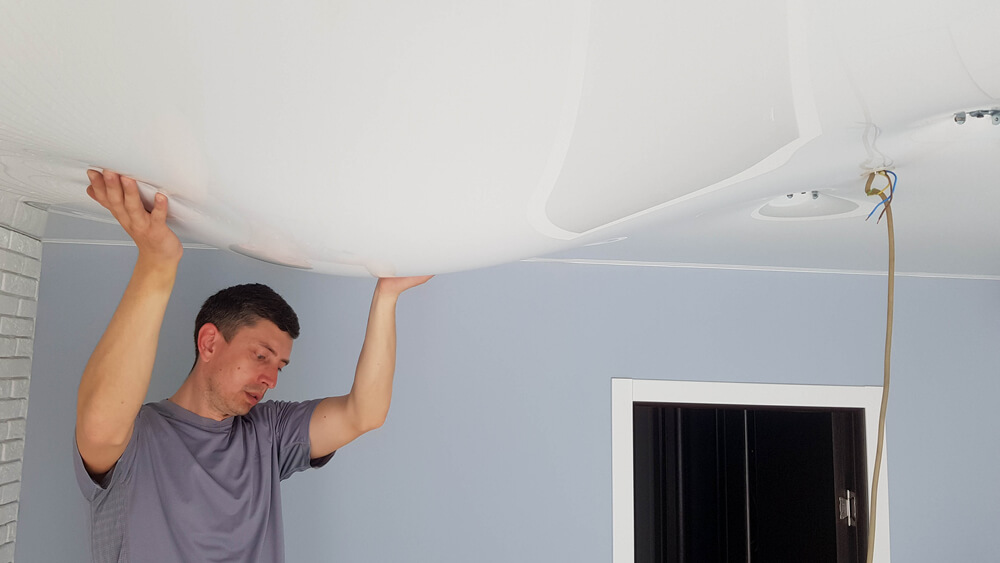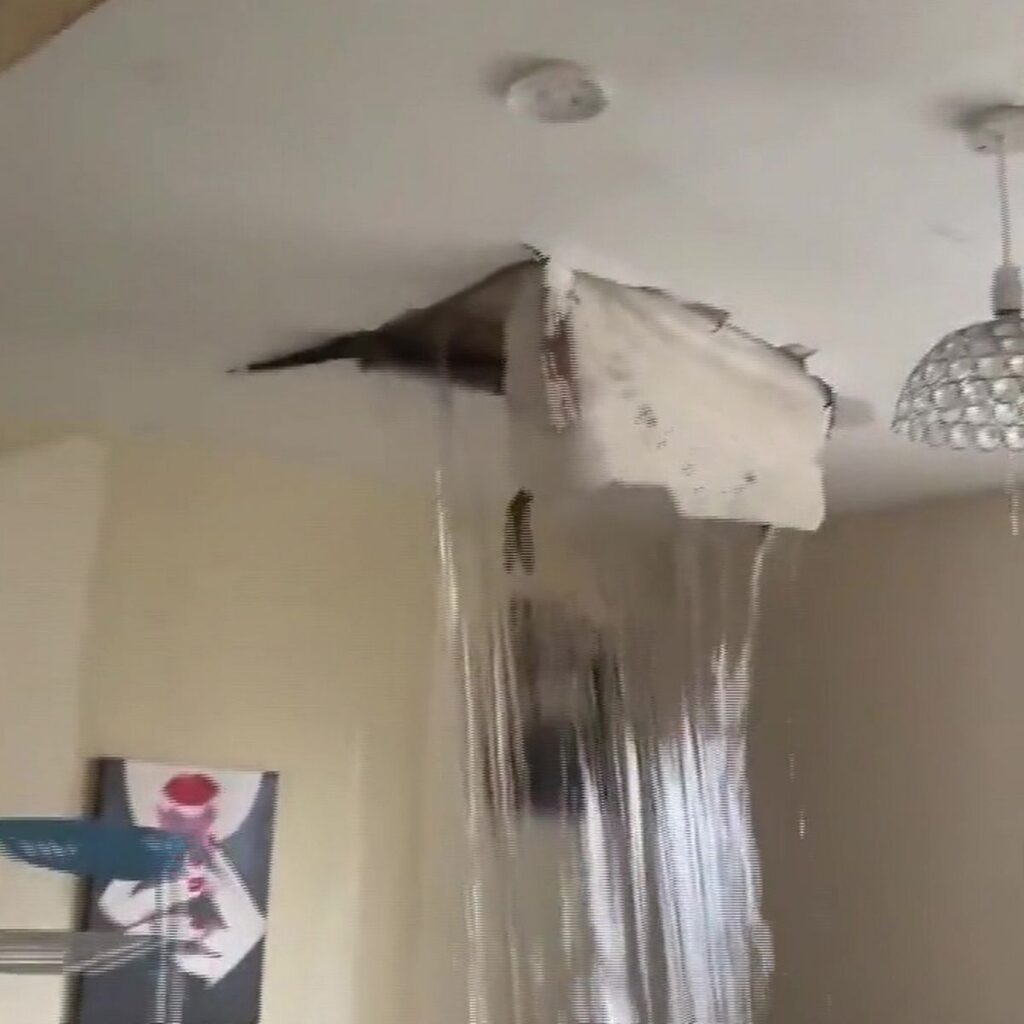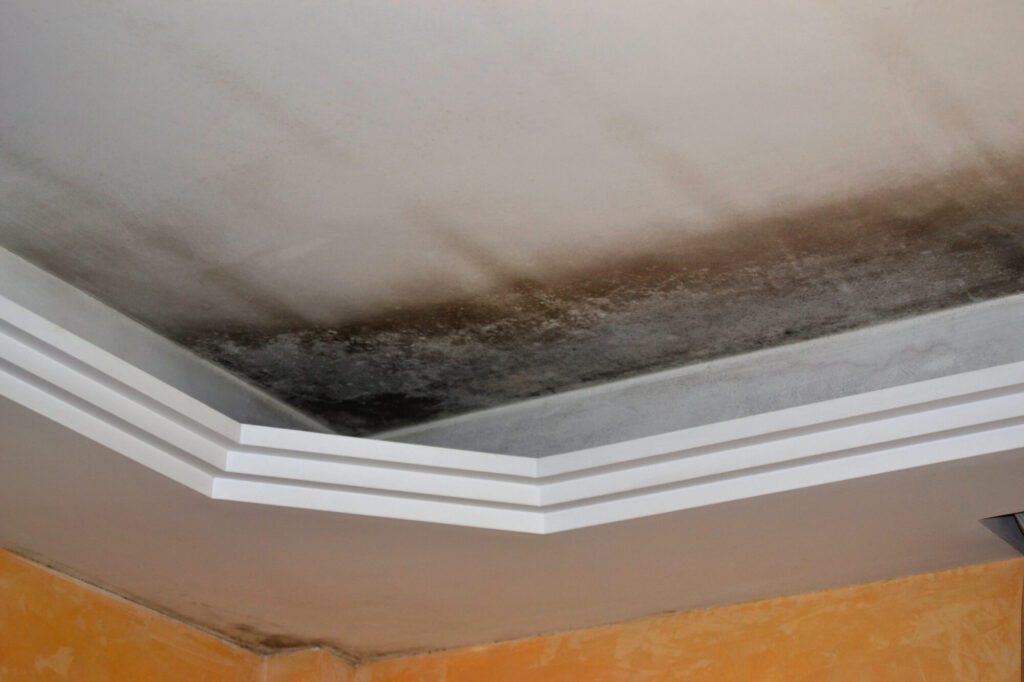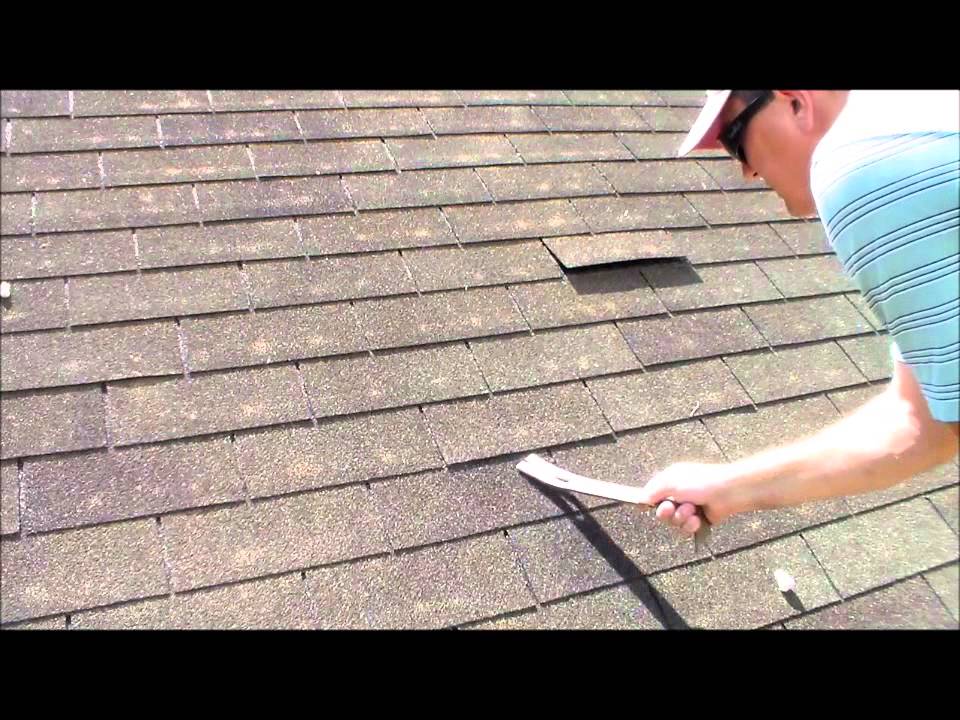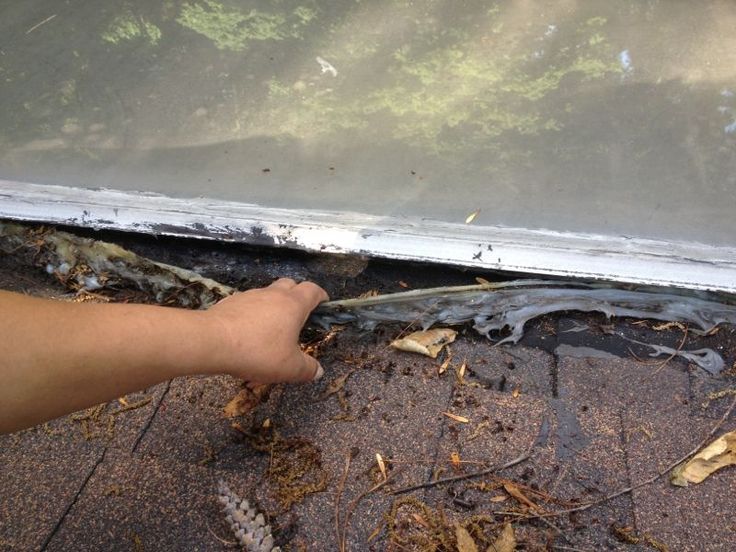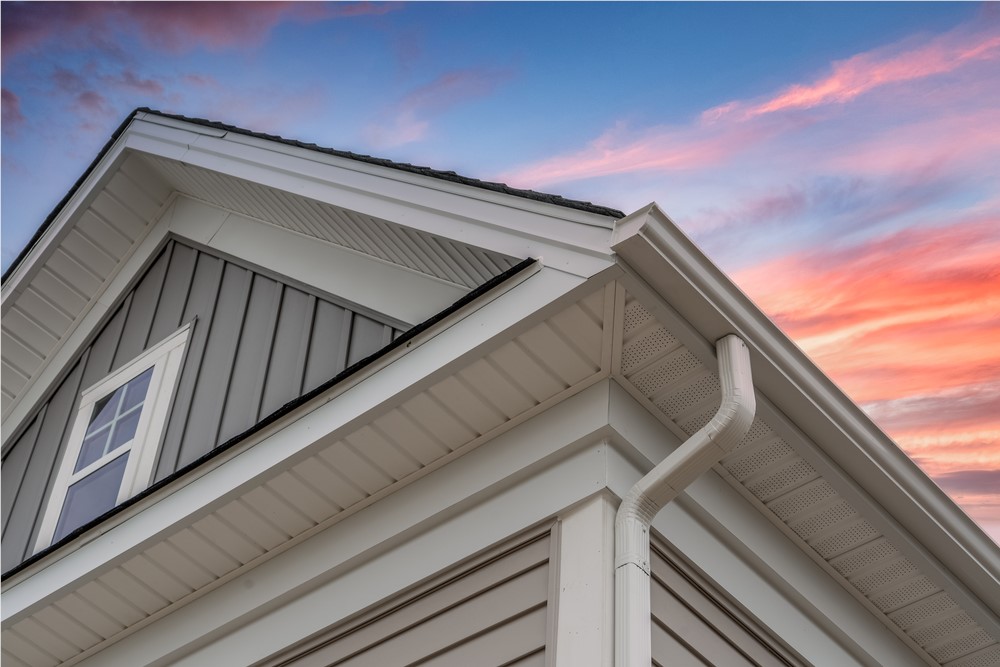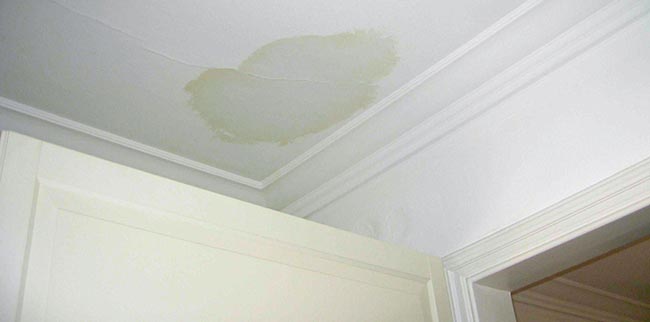If you ever find yourself in the unfortunate situation of water leaking through your ceiling, don’t panic. It can be a distressing and unexpected problem, but there are steps you can take to mitigate the damage and get it resolved. This article will walk you through some practical tips on what to do if water starts to infiltrate your living space from above. With a calm approach and swift action, you’ll be able to address the issue effectively and minimize any potential long-term consequences.


Assess the Situation
Locate the source of the leak
When water starts leaking through the ceiling, it is crucial to find the source of the leak. This can help you determine the appropriate actions to take and prevent further damage. Start by inspecting the area directly above the leak to identify any visible signs of water damage. Look for dripping water, wet spots, or discoloration on the ceiling. Additionally, check nearby plumbing fixtures, such as toilets, sinks, and showers, to ensure there are no visible signs of leaks or damage.
Determine the extent of the damage
Once you have located the source of the leak, it is essential to assess the extent of the damage. Look for any signs of water spreading or pooling on the ceiling or walls. Check if there are any structural issues, such as sagging or bulging areas, which may indicate more severe damage. It is also crucial to consider the potential for hidden damage, such as water seeping into insulation, electrical wiring, or the subfloor. By understanding the scope of the damage, you will be better prepared to take appropriate action to minimize further harm.
Take immediate action to minimize further damage
When dealing with a water leak through the ceiling, it is crucial to act promptly to prevent additional damage. Before diving into more extensive repairs, focus on mitigating the immediate risks. One critical step is to turn off the electricity to avoid any potential electrical hazards caused by water intrusion. Locate the main electrical panel and switch off the circuit breakers that control the affected areas. Additionally, take precautions to prevent slip and fall accidents by ensuring the affected area is clear of any obstacles and placing warning signs if necessary.
Ensure Safety
Turn off the electricity
One of the first actions you should take when dealing with a water leak through the ceiling is to turn off the electricity. Water and electricity are a dangerous combination, and leaving the power on can pose significant safety risks. Locate your main electrical panel and switch off the circuit breakers that control the affected areas. If you are unsure which breakers to turn off, consider turning off the main power supply to the entire house. It is crucial to prioritize safety and avoid potential electrical hazards while dealing with the water damage.
Take precautions to prevent slip and fall accidents
Water leaks can make floors slippery, increasing the risk of slip and fall accidents. To ensure everyone’s safety, take appropriate precautions to minimize these hazards. Clear the affected area of any furniture, rugs, or other items that could cause trips or falls. If the water has spread to adjacent rooms or hallways, consider placing barriers or warning signs to alert people of potential dangers. Additionally, mop up any standing water or use towels to absorb the moisture and prevent further accidents. By taking these precautions, you can create a safer environment for yourself and others while addressing the water damage.


Contain the Water
Place buckets or containers to collect dripping water
To prevent water from spreading further and causing additional damage, it is essential to contain it as much as possible. Place buckets, containers, or even large pans directly under the leaking area to collect the dripping water. Make sure these containers are sturdy and have a sufficient capacity to hold a substantial amount of water. Regularly monitor and empty the containers to prevent overflow and subsequent water damage. This simple step can help minimize the potential damage caused by the leak while you address the source of the problem.
Use towels or a tarp to create a temporary barrier
In addition to collecting dripping water, you can also create a temporary barrier using towels or a tarp. If the water is spreading across the ceiling or down the walls, use absorbent towels to soak up as much moisture as possible. Place these towels strategically to intercept the water flow and prevent it from reaching other areas of the room or adjacent rooms. Alternatively, if the leak is more significant, you can use a tarp or plastic sheeting to cover the affected area and divert the water into a desired location, such as a floor drain or another container.
Redirect water flow with a plastic sheet or hose
If the water leak is substantial or if the dripping water is impacting a larger area, you may need to redirect the water flow. One method is to use a plastic sheet or tarp to channel the water into a bucket or another container placed strategically beneath the leak. Alternatively, if the leak is coming from a plumbing fixture, such as a pipe or faucet, you can attach a hose to redirect the water flow. Be cautious when using this method and ensure the hose is securely attached to prevent any further water damage. Redirecting the water flow can help minimize the damage caused by the leak while you address the source of the problem.
Call for Professional Help
Contact a plumber to fix the source of the leak
While you may be tempted to repair the leak yourself, it is advisable to contact a professional plumber to fix the source of the leak. Water leaks can arise from various sources, including burst pipes, faulty plumbing fixtures, or damaged seals. A qualified plumber will have the expertise and tools necessary to identify and repair the specific issue causing the leak. Attempting to fix the problem yourself could potentially worsen the situation or lead to additional damage. It is best to rely on a professional to ensure the leak is correctly addressed and prevent future problems.
Consult with a professional water damage restoration company
Once the source of the leak has been fixed, it is essential to consult with a professional water damage restoration company. These experts specialize in mitigating water damage and ensuring a thorough cleanup and restoration process. They have the knowledge, experience, and equipment to assess the extent of the damage, remove excess moisture, and prevent mold growth. By seeking professional assistance, you can ensure the proper restoration of your property and minimize the risk of long-term consequences associated with water damage.
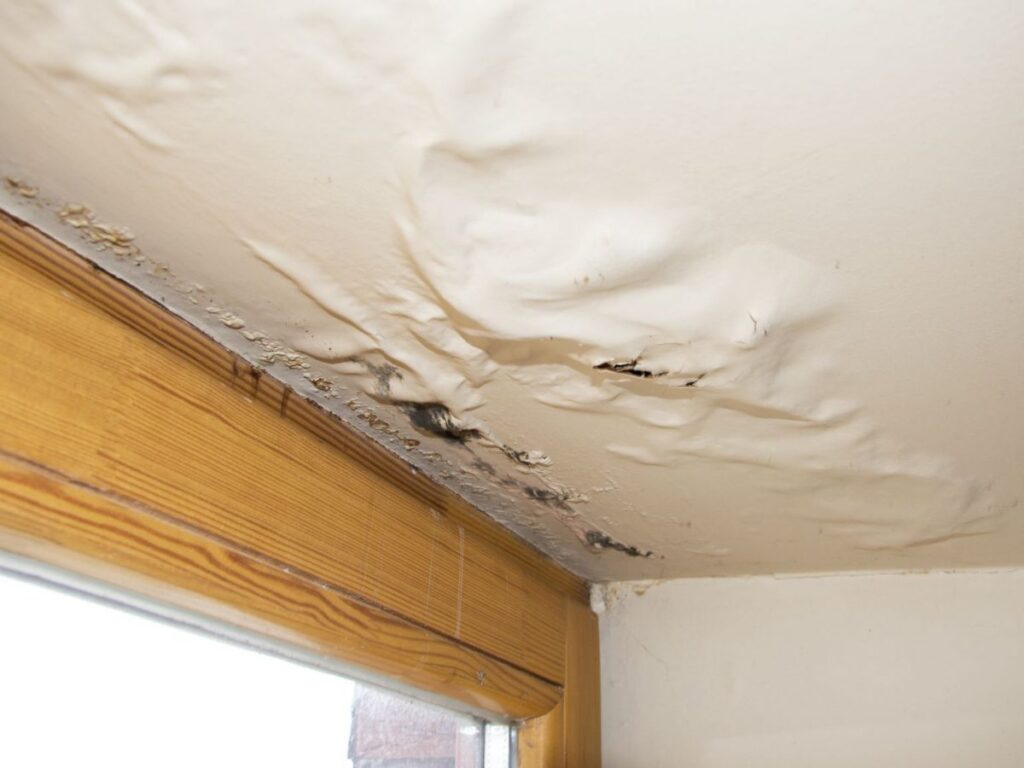

Document the Damage
Take photographs or videos of the affected areas
When dealing with water damage, it is crucial to document the extent of the damage for insurance purposes. Take photographs or videos of the affected areas, including the leaking ceiling, damaged walls, flooring, and furniture. Capture both close-up shots and wider angles to provide a comprehensive view of the damage. These visual records will serve as valuable evidence when filing an insurance claim and can help ensure a fair assessment of the required repairs and replacements.
Keep records of any communication with insurance providers
In addition to documenting the physical damage, it is equally important to keep records of any communication with your insurance providers. Maintain a detailed log of all conversations, including dates, times, and the names of representatives you speak with. Note the specifics discussed, such as claim details, coverage explanations, and any instructions or requirements provided by the insurance company. Keeping thorough records will help ensure a smooth and transparent process throughout the insurance claim and restoration process.
Dry and Clean Up
Remove any wet or damaged items
After the water leak has been resolved and documented, it is time to start the cleanup process. Begin by removing any wet or damaged items from the affected area. This includes furniture, rugs, curtains, or any other belongings that have been directly exposed to water. Additionally, check for water seepage beneath flooring or behind walls, as these areas may also require attention. Discard any items that are beyond repair or heavily contaminated by the water. By promptly removing wet items, you can prevent further damage, mold growth, and potential health hazards.
Use fans and dehumidifiers to dry out the space
Once the affected area is clear of wet items, it is crucial to initiate the drying process to prevent mold growth and further damage. Use fans and dehumidifiers to increase air circulation and remove excess moisture from the space. Position fans strategically to direct air towards the wet areas, such as the ceiling, walls, and flooring. Consider opening windows and doors to facilitate cross ventilation and the exchange of moist indoor air with drier outdoor air. If necessary, rent professional-grade drying equipment to expedite the drying process effectively.
Clean affected surfaces with disinfectant
As water leaks through the ceiling, it often carries contaminants and can potentially lead to bacterial or fungal growth. After the affected area is dry, thoroughly clean all impacted surfaces with a disinfectant. This will help eliminate any remaining bacteria or mold spores, ensuring a hygienic and safe environment. Follow the instructions provided by the disinfectant manufacturer and pay close attention to high-touch areas, such as light switches, doorknobs, and baseboards. By taking these cleaning measures, you can minimize any potential health risks associated with the water damage.
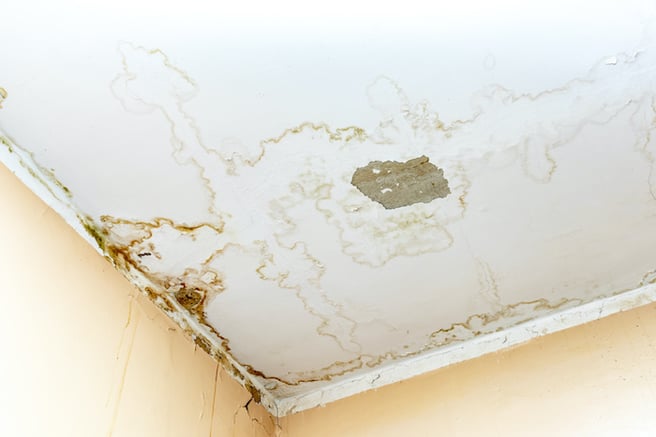

Repair and Restore
Fix the source of the leak
With the damage cleaned and dried, it is now time to address the repairs and restoration. Begin by fixing the source of the leak, ensuring that the plumbing issues or any other causes have been completely resolved. Seek the assistance of a professional plumber or contractor to ensure that the repairs are done correctly and effectively. By addressing the source of the leak, you can prevent future incidents and ensure the stability of your property.
Repair any damage to the ceiling and walls
Water leaks through the ceiling often lead to visible damage on the ceiling and walls. Once the source of the leak has been fixed, repair any structural damage that may have occurred. This may include patching holes, replacing damaged drywall or plaster, and repainting the affected areas to restore the overall aesthetics of your space. Consider consulting a professional contractor or handyman if you are unsure about the repair techniques or want to achieve a seamless finish.
Replace or restore damaged flooring or furniture
If the water leak has caused damage to your flooring or furniture, it may be necessary to replace or restore these items. Carpeting, hardwood flooring, or laminate may need to be replaced if they are extensively damaged or if mold growth has occurred. Upholstered furniture that has absorbed excessive moisture may also require professional cleaning or replacement. Consult with restoration professionals or furniture specialists to determine the appropriate actions for your specific situation. Prioritize the restoration of these items to ensure your space is fully functional and aesthetically pleasing once again.
Address Mold and Mildew
Check for signs of mold growth
After a water leak through the ceiling, it is crucial to be vigilant for any signs of mold growth. Mold can thrive in moist environments and can pose significant health risks if left unchecked. Inspect the affected areas carefully, including hidden spaces behind walls or beneath flooring. Look for visible signs of mold, such as black or green patches, a musty odor, or any unexplained respiratory issues experienced by occupants. If you notice any potential signs of mold growth, take immediate action to address the situation and prevent further contamination.
Contact a professional mold remediation company if necessary
If you discover mold growth or suspect extensive contamination, it is advisable to contact a professional mold remediation company. These specialists are trained in safely and effectively removing mold and restoring a healthy environment. They have the expertise, tools, and protective equipment necessary to control and eliminate mold growth. Attempting to remove mold yourself can be hazardous, as improper handling can distribute mold spores and exacerbate the problem. Relying on professionals ensures a thorough and safe remediation process to protect the well-being of you and your property.


Monitor and Prevent Future Leaks
Regularly inspect the roof, pipes, and plumbing fixtures
To prevent future water leaks, it is important to regularly inspect the roof, pipes, and plumbing fixtures in your property. Perform routine checks for any signs of damage, wear, or potential issues that may lead to leaks. Look for loose or missing shingles on the roof, cracks or leaks in pipes, and signs of corrosion on plumbing fixtures. By identifying and addressing these issues promptly, you can prevent potential water damage and associated complications. If you are unsure about conducting these inspections yourself, consider hiring a professional to ensure a thorough evaluation.
Maintain proper ventilation and moisture control in the building
Proper ventilation and moisture control are essential in preventing water leaks and subsequent damage. Ensure your property has adequate ventilation in areas prone to moisture accumulation, such as bathrooms, kitchens, and basements. Use exhaust fans or open windows to remove excess humidity and prevent condensation. Consider installing a dehumidifier in areas that experience high levels of moisture. Additionally, promptly address any plumbing issues or leaks to prevent the buildup of moisture that can lead to more significant problems. By maintaining good ventilation and moisture control, you can minimize the risk of water leaks and associated damage.
Review Insurance Coverage
Review your homeowner’s insurance policy
Following a water leak through the ceiling, it is crucial to review your homeowner’s insurance policy to understand your coverage. Familiarize yourself with the specifics of your policy, including coverage for water damage, mold remediation, and necessary repairs. Understand the deductibles, limits, and exclusions to ensure a realistic expectation of what your insurance can provide. If you have any questions or require clarification, contact your insurance provider for assistance. Being well-informed about your policy will help facilitate the claims process and allow for effective communication with your insurance company.
File a claim if necessary and follow the insurance company’s instructions
If the water leak through the ceiling has resulted in significant damage, it may be necessary to file an insurance claim. Start the process by contacting your insurance company and providing them with all the relevant details and documentation. Follow their instructions in terms of providing evidence, estimates, and any additional information required. Be prepared for a claims adjuster to visit your property to assess the damage and validate your claim. Cooperate with the insurance company throughout the process, timely responding to requests and providing any necessary documentation to expedite the resolution of your claim.
In conclusion, dealing with a water leak through the ceiling can be a stressful situation, but by following these comprehensive steps, you can minimize further damage and restore your property efficiently. Assess the situation by locating the source of the leak and determining the extent of the damage. Ensure safety by turning off the electricity and taking precautions to prevent slip and fall accidents. Contain the water by collecting dripping water, creating a temporary barrier, and redirecting water flow. Call for professional help by contacting a plumber and consulting a water damage restoration company. Document the damage through photographs and records of communication with insurance providers. Dry and clean up the affected area using fans, dehumidifiers, and disinfectants. Repair and restore any damaged structures, flooring, or furniture. Address mold and mildew by checking for signs of growth and contacting a professional mold remediation company if necessary. Monitor and prevent future leaks by regularly inspecting the roof, pipes, and plumbing fixtures, and maintaining proper ventilation and moisture control. Finally, review your homeowner’s insurance policy, file a claim if necessary, and follow the instructions provided by the insurance company. By following these steps, you can effectively manage a water leak through the ceiling and ensure the restoration of your property.

